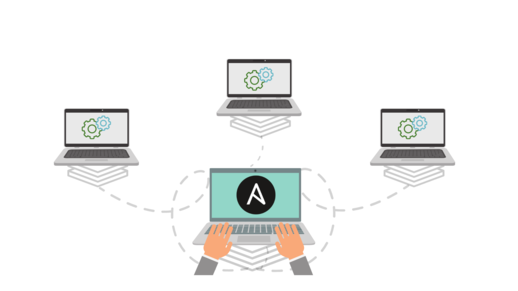With Ansible, you can automate your information systems
Automation tools are one technology that has had a transformative impact on system administrators. We may mention Chef or Puppet as tools. But for a long time, Ansible was the tool that won the tool fight automation. But, exactly, what is Ansible?
The administrator should get familiar with the Ansible control environment after learning about best practices in network automation and understanding the philosophy behind writing Python scripts.
Ansible is both a programming language and the name of the engine that runs it. Because of its simplicity and ease of interaction with current equipment, it is even more suited for network automation.
Ansible is a piece of software that provides cross-platform computer help through simple but efficient automation. It is aimed primarily at IT professionals who require it for application deployment, workstation and server upgrades, cloud provisioning, configuration management, intra-service orchestration, and pretty much anything else that a system administrator performs on a weekly or daily basis. This Automation solution does not require any extra security infrastructure or agent software, making it considerably easier to set up.
Because Ansible is primarily concerned with automation, each activity must be conducted using instructions. While everything is written in basic script style, version management is straightforward.
The practical upshot is a key contribution to the IT industry’s “infrastructure as code” trend. With repositories of self-documenting, proven, and executable solutions capable of operating an organization regardless of personnel changes.
Ansible is at the forefront of automation, systems management, and DevOps, but it is also useful to non-technologists. Ansible lets you set up not just one computer, but potentially a whole network of machines all at once while requiring no programming skills. Humans can understand ansible instructions. Whether you’re a computer newbie or a seasoned veteran, its files are straightforward to understand.
Ansible’s Operation
Ansible has two sorts of computers: control nodes and managed nodes. A control node is a machine that is set up to run it. A control node is required, with a backup control node optional. A managed node is any device that is managed by the control node.
Ansible works by first connecting to network nodes (users, servers, or whatever you’re configuring) and then delivering a little program known as an Ansible module to that node. it removes these modules after running them over SSH. This interaction is only necessary if your Automation tool control node has access to the managed nodes. Although SSH keys are the most often used means of authentication, other methods are permitted.
What would it do?
The phrase Ansible modules seem complicated, however, Ansible handles the majority of the complexity, not the user. An Ansible module is designed to represent a model of a system’s ideal state. This means that each module specifies what should be true on each given managed node. For example, if a systems administrator determines that all workstations in a company should have “software” version X.Z installed, Ansible’s packaging module is responsible for determining if each node has “software” X.Z loaded. Ansible identifies the operating system and conducts the appropriate process to upgrade it to “software” X.Z if it finds a managed node with “software” X.Y installed. As a result, any workstation in a business may be upgraded with software supported by the IT department overnight.
However, infrastructure maintenance entails more than simply monitoring software versions. When people talk about using it, they’re really talking about utilizing Ansible modules, which are the components of this Automation tool that do certain tasks. If you need to automate anything across several machines, check through it modules to locate one that performs the work at hand, and then install it so you can set up and run that module. You may also develop your own custom modules to handle particular tasks if you are a programmer. If your module is generally beneficial, you may also submit it for inclusion in the Ansible project so that others can benefit from your efforts.
Zen Networks is a leading provider of advanced IT solutions, specializing in log monitoring, automation and DevOps.
Our expert team offers a wide range of services, including IT monitoring, cloud services, agile solutions, and automation. We are also well-versed in the installation and implementation of Elasticsearch, Logstask, and Kibana on Docker.
By leveraging our extensive domain expertise and innovative technologies, we empower our clients to optimize their IT infrastructure and achieve operational excellence. Our solutions are designed to help organizations of all sizes to streamline their processes, improve efficiency, and reduce costs.
We invite you to take advantage of our complimentary consultation and quote service to learn more about how we can help your organization to achieve its IT goals. Contact us now to schedule your consultation and discover the benefits of working with Zen Networks.
Author






